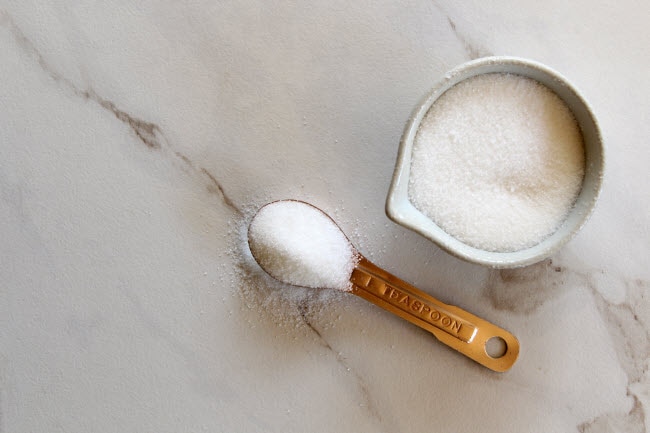Looking to cut calories for weight management or other health reasons? Allulose (a.k.a. D-psicose) can help. This relatively new low-calorie sugar allows you to consume many of your favorite foods and beverages without racking up the unwanted calories—or the guilt!
What is allulose – and how is different from table sugar?
Like fructose and glucose, allulose is a simple sugar, or monosaccharide. Table sugar (sucrose), on the other hand, is a disaccharide made of both fructose and glucose. Allulose and fructose share the same chemical formula, but those chemicals are arranged differently. This structural difference prevents the body from recognizing allulose as a carbohydrate and metabolizing it as energy, like it does with fructose. The result? The sweet flavor you crave with 90 percent fewer calories than table sugar.
Who can benefit from allulose?
Allulose looks, feels and tastes like table sugar, though it’s 70 percent as sweet. And unlike the traditional stuff, it doesn’t affect blood glucose. This is an important distinction for individuals with diabetes who must monitor and regulate their blood sugar levels. The low-cal sugar also doesn’t appear to have any impact on the digestive system (e.g., gas, diarrhea), a complaint among some who consume products containing sugar alcohols, such as xylitol and mannitol.
Because it’s extremely low in sugar, allulose is also becoming popular among those adhering to a ketogenic (keto) diet. Instead of focusing on calories, the keto diet involves consuming fats and protein and limiting carbohydrates, including sugar. This method of eating forces the body into a normal metabolic state called ketosis, in which it relies on fat (rather than carbs) for fuel and typically results in weight loss.
Since weight loss is a matter of consuming fewer calories than the body burns, anyone who wants to shed unwanted pounds without using artificial sweeteners could benefit from replacing high calorie foods with those containing allulose.
Which foods contain allulose?
Allulose is known as a “rare sugar” because it naturally occurs in just a small handful of foods. This exclusive list includes figs, jackfruit, maple syrup, raisins and wheat.
Although it isn’t as widely available as table sugar and sugar substitutes (e.g., Stevia) at this time, it has been “Generally Recognized As Safe (GRAS)” by the U.S. Food and Drug Administration (FDA), so you can expect to see a steady rise in its availability and popularity.
Because of its ability to replicate table sugar in taste, texture and function, allulose is a welcome addition to:
- Beverages
- Baked goods (e.g., biscuits, rolls, cake, pie)
- Candies (e.g., chewing gum, hard candy)
- Coffee mixes
- Frozen yogurt, ice cream and sorbet
- Gelatins, fillings and puddings
- Jams, jellies and preserves
- Salad dressings
- Sauces and syrups
- Yogurt
Among the foods currently containing allulose are Quest HERO Protein Bars (available in a variety of flavors). These bars are not only delicious, they’re gluten-free, full of fiber, packed with protein and just 200 calories each.

